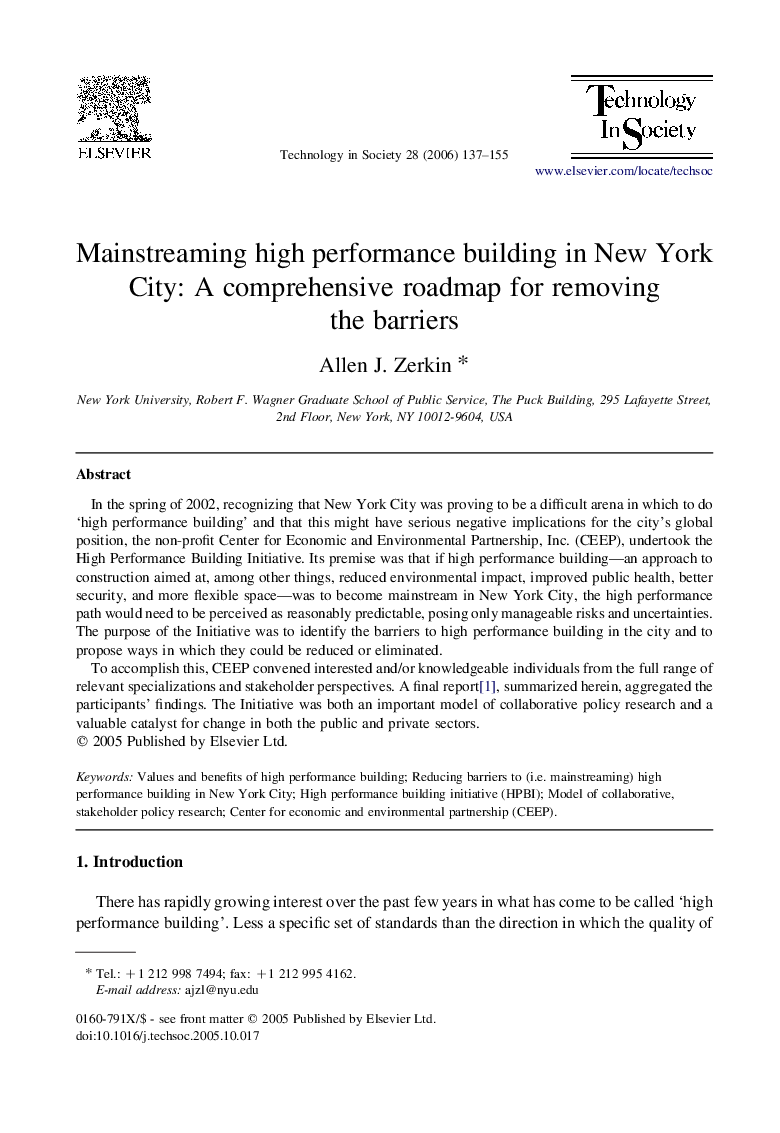| Article ID | Journal | Published Year | Pages | File Type |
|---|---|---|---|---|
| 375497 | Technology in Society | 2006 | 19 Pages |
In the spring of 2002, recognizing that New York City was proving to be a difficult arena in which to do ‘high performance building’ and that this might have serious negative implications for the city's global position, the non-profit Center for Economic and Environmental Partnership, Inc. (CEEP), undertook the High Performance Building Initiative. Its premise was that if high performance building—an approach to construction aimed at, among other things, reduced environmental impact, improved public health, better security, and more flexible space—was to become mainstream in New York City, the high performance path would need to be perceived as reasonably predictable, posing only manageable risks and uncertainties. The purpose of the Initiative was to identify the barriers to high performance building in the city and to propose ways in which they could be reduced or eliminated.To accomplish this, CEEP convened interested and/or knowledgeable individuals from the full range of relevant specializations and stakeholder perspectives. A final report[1], summarized herein, aggregated the participants' findings. The Initiative was both an important model of collaborative policy research and a valuable catalyst for change in both the public and private sectors.
